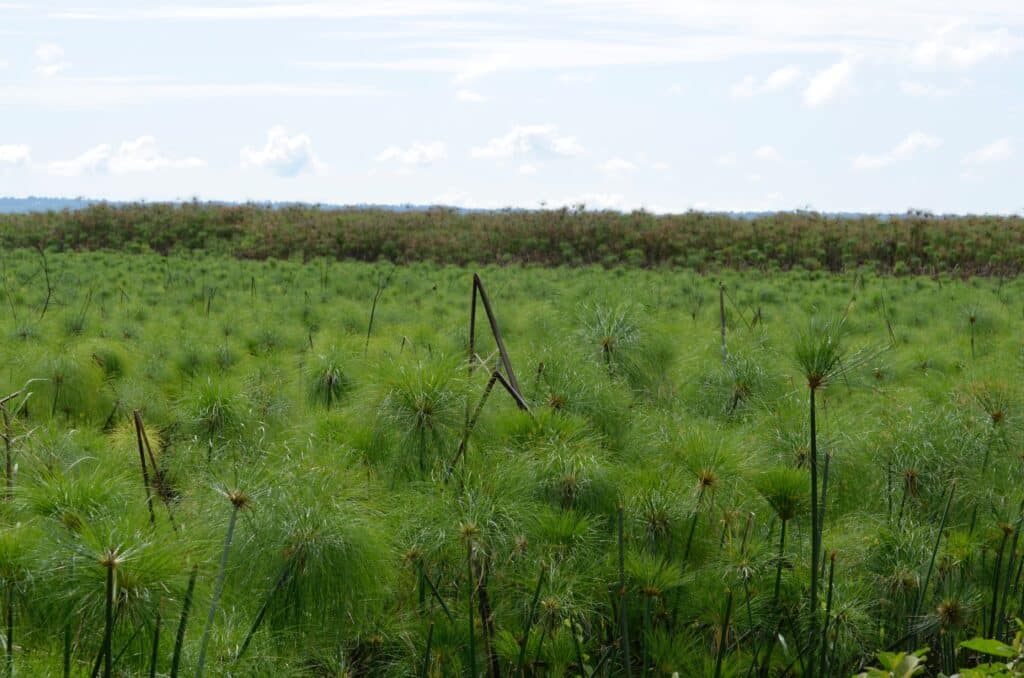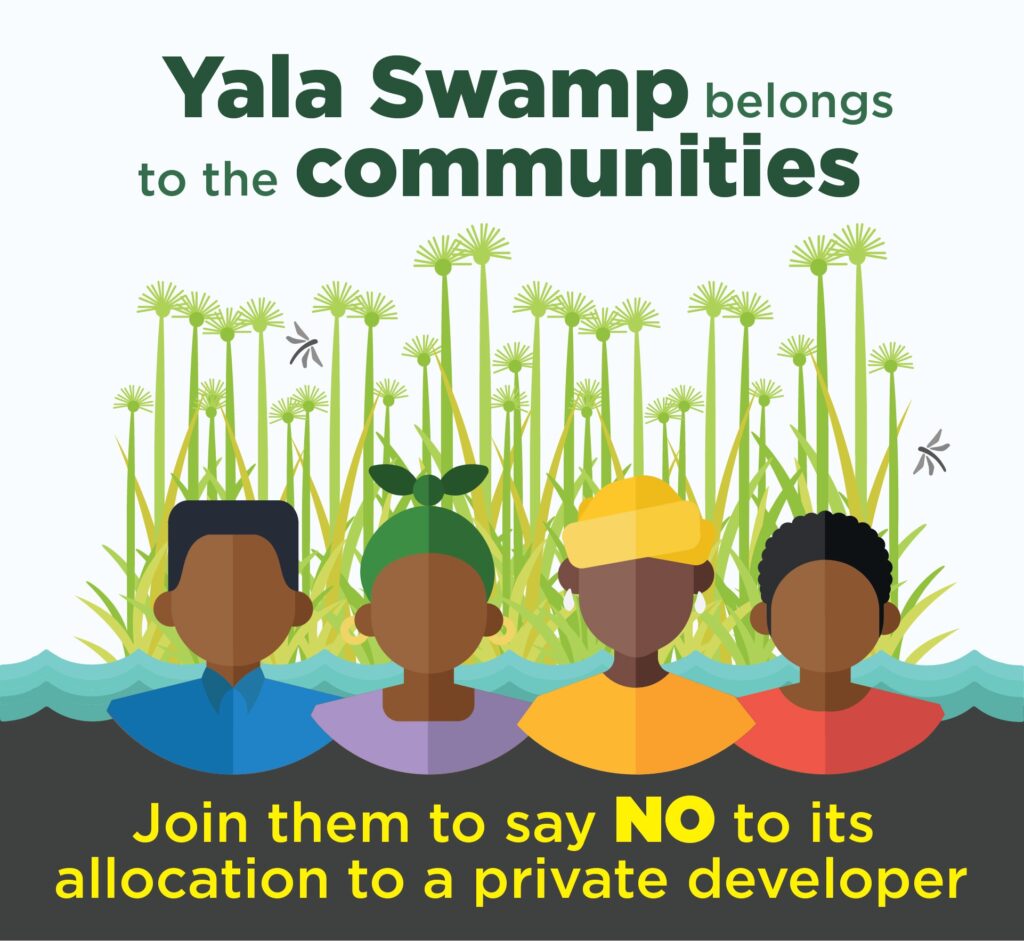Push to allocate precious Kenyan wetland to private developer draws public outrage

Kenya’s National Land Commission has hinted its intention to pursue the controversial allocation of over 6,000 ha of Yala Swamp to a private developer. Local communities and stakeholders enraged by the move.
By John Mwacharo
Ayiro Lwala, a resident of Kanyibok village in Siaya County, Kenya, is an outraged man. News of the National Land Commission (NLC) plans to push ahead with the controversial allocation of 6,763.74 ha of Yala Swamp to a private developer – Lake Agro Limited – has reached him. The Chairperson of the Yala Ecosystem Site Support Group (YESSG), a community organization championing the conservation of Kenya’s largest freshwater wetland, is lost for words.
“This is outrageous! Unbelievable! We categorically objected to the allocation. How can NLC go against our wishes? Whose interests are they protecting?”, poses Lwala.
Yala Swamp is a crucial ecosystem in Kenya. The wetland lies on the northeastern shore of Lake Victoria, cutting across Siaya and Busia counties. The swamp is an internationally recognized Key Biodiversity Area (KBA).
Yala Swamp is home to the nationally threatened Sitatunga antelope, other large mammals and numerous wetland birds (including the vulnerable Papyrus Yellow Warbler Calamonastides-gracilirostris). It is also a refuge for cichlid fish endemic to Lake Victoria that have become extinct in the main lake. In addition, the swamp provides numerous essential ecosystem services and vital resources such as water, food, medicine and wood for over 250,000 people, including Lwala, who live around it.
The wetland, however, faces many threats. Over-exploitation of its natural resources, land-use changes, habitat degradation and biodiversity loss are some of these threats. Lake Agro Limited plans to set up a sugarcane plantation in the swamp, piling more pressure on the already fragile situation.
In June, NLC convened public hearings for allocation in Siaya. Twenty-one entities, including YESSG and other community, civic and governmental organizations, presented strong objections grounds for the project ranging from human rights violations and threats to community livelihoods to habitat destruction and biodiversity loss.
Nature Kenya, the BirdLife International partner in Kenya, is at the forefront of preventing this from happening.
“Sugarcane is the wrong crop for a wetland like Yala.This kind of farming threatens the swamp’s biodiversity. Adverse effects of this project include massive loss of natural habitat, excessive water extraction, leaching of agrochemicals and fertilizer, air and water pollution,” says Dr Paul Maitku, the Executive Director of Nature Kenya.
The BirdLife International partner in Kenya has instituted an advocacy campaign to halt the land allocation. Among the actions that Nature Kenya has taken is writing objection letters to NLC, the Kenyan Lands and Physical Planning Cabinet Secretary and the Siaya County Government. Nature Kenya also presented oral submissions during the public hearings and is mobilising public support for the rejection of the allocation through an online petition, social media and the press.
“Nature Kenya is not against investment. Investment should not come at the cost of the well-being of the country’s important habitats. Afterall, economic development and food security depend on the ecological services provided by a healthy environment,” notes Dr Matiku.
“BirdLife International calls upon the Government of Kenya to stop the allocation of Yala Swamp give away to a private investor as it sets a bad precedent. We support development that critically and objectively looks at social, economic and ecological impacts. In the Yala case, there is a clear lapse in examining the impacts on people and biodiversity. Sustainable economic development can only be realized if ecosystems like Yala Swamp, that provide key ecosystem services, are jealously protected to continue providing these services in perpetuity, says Ken Mwathe, Policy and Communications Coordinator, BirdLife International, Africa.
Whether NLC will heed to calls of the Yala Swamp communities remains to be seen. What is certain, though, is that efforts to stop the allocation will relentlessly continue to the end.
Together, we can save Yala Swamp. Sign our petition here
“This is outrageous! Unbelievable! We categorically objected to the allocation. How can the National Land Commission go against our wishes? Whose interests are they protecting?”Ayiro Lwala, a resident living around Yala Swamp

Sign this petition and save the Yala Swamp!


